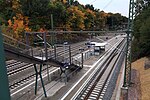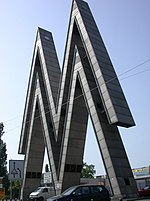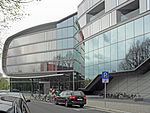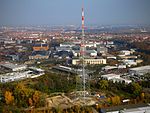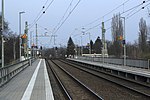Battle of Leipzig

The Battle of Leipzig (French: Bataille de Leipsick; German: Völkerschlacht bei Leipzig, [ˈfœlkɐˌʃlaxt baɪ̯ ˈlaɪ̯pt͡sɪç] ; Swedish: Slaget vid Leipzig; Russian: Битва под Лейпцигом), also known as the Battle of the Nations, was fought from 16 to 19 October 1813 at Leipzig, Saxony. The Coalition armies of Austria, Prussia, Sweden, and Russia, led by Tsar Alexander I and Karl von Schwarzenberg, decisively defeated the Grande Armée of French Emperor Napoleon Bonaparte. Napoleon's army also contained Polish and Italian troops, as well as Germans from the Confederation of the Rhine (mainly Saxony and Württemberg). The battle was the culmination of the German Campaign of 1813 and involved 560,000 soldiers, 2,200 artillery pieces, the expenditure of 400,000 rounds of artillery ammunition, and 133,000 casualties, making it the largest battle of the Napoleonic Wars, and the largest battle in Europe prior to World War I. Decisively defeated, Napoleon was compelled to return to France while the Sixth Coalition kept up its momentum, dissolving the Confederation of the Rhine and invading France early the next year. Napoleon was forced to abdicate and was exiled to Elba in May 1814.
Excerpt from the Wikipedia article Battle of Leipzig (License: CC BY-SA 3.0, Authors, Images).Battle of Leipzig
Straße des 18. Oktober, Leipzig Stötteritz (Südost)
Geographical coordinates (GPS) Address Nearby Places Show on map
Geographical coordinates (GPS)
| Latitude | Longitude |
|---|---|
| N 51.312222222222 ° | E 12.413333333333 ° |
Address
Völkerschlachtdenkmal
Straße des 18. Oktober 100
04299 Leipzig, Stötteritz (Südost)
Saxony, Germany
Open on Google Maps


